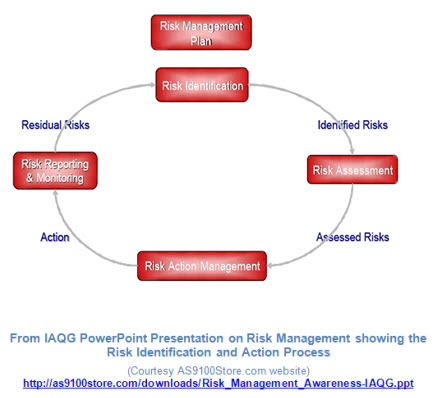When the ISO 9000 standard was first introduced, the aerospace industry took the program to heart and began reforming their quality management systems to comply with the standard. What many major manufacturers and suppliers soon discovered, however, was that the ISO standard did not go far enough in addressing the additional safety, risk management, and regulatory requirements of their business, so they augmented it with additional quality standards of their own. The result was a hodge-podge of company-specific quality management systems, many with competing, and in some cases contradictory, requirements, leaving suppliers and component vendors holding different sets of documents for each company with whom they did business.
The first effort at rectifying this issue was completed in 1997, when several of the big aerospace industry players, including Grumman, Rolls Royce, Lockheed-Martin, and General Electric got together with others to try and write a standard specific to their industry. This standard, titled AS 9000, was based on ISO 9001:1994, but added quality standards and best practices from across the industry.
AS 9000 was barely off the printing presses when a larger group of sector players and international organizations, including the Aerospace Technical Committee of the International Organization for Standardization (ISO), the European Association of Aerospace Industries (AECMA), and the American Aerospace Quality Group (AAQG), with oversight from the International Aerospace Quality Group (IAQG), sat down and began to rewrite the standard again. The final result was the AS9100 standard, published by the Society of Automotive Engineers (SAE) International in 1999. It was the first comprehensive standard written for the aerospace industry.
The driving factor behind the rewrite was to make it a truly global standard, touching all parts of the aerospace industry to keep costs down while maintaining compliance and ensuring quality. The new version helped to placate regulatory agencies like the Federal Aviation Administration (FAA) and others that felt that the ISO standards did not go far enough to ensure the safety and quality of the industry. To complement the ISO standards, AS 9100 encompassed all military and non-military sectors as well as the space and defense industries.
The AS9100 standard provides guidance for suppliers, designers, and manufacturers alike, and is now a several-part-series of standards that cover inspection, maintenance, and the requirements for stockpile suppliers and distributors. Although the entire ISO standard is contained within AS 9100, it is only about 70% of the total standard. The balance is aerospace-specific programs and topics, most of which can be backtracked to directives issues by the FAA including airworthiness, part certification, and identification marking. Beyond the ISO portion, some of the requirements specific to the aerospace industry included in AS9100 are:
- Subcontractor performance approval and review
- Maintenance, reliability, and safety
- Configuration management
- First article inspection
- Verification of design, validation and testing processes
- Purchased product verification
- Product identification throughout its life cycle
- Production machinery, tools and numerical control programs compliance
- Work performed at an outside supplier’s facility
- Special processes
- Technical documentation reporting and control

- AS 9100 has undergone two revisions since it was first published. The last rewrite was designed to coincide with the release of ISO 2001:2008, and is known as AS9100C. The most notable changes in AS9100C are the addition of new requirements for project management and risk management, two of the biggest concerns facing the industry today. The project management requirements were included to ensure that stakeholders had a say in the changes proposed by a company, as well as ensure that continuous improvement efforts followed along with the project management process. As for risk management and assessment, it has now been implemented as its own process, weaving in business, supply chain, cost, technical, program constraint and quality considerations. Each business must undergo a risk management review any time a new project is undertaken, a process is changed, or a product is modified. Acceptable programs, along with each assessed action item, must include a responsible party, mitigation criteria, completion of the criteria, and final acceptance to each line item.
back to ISO Standards